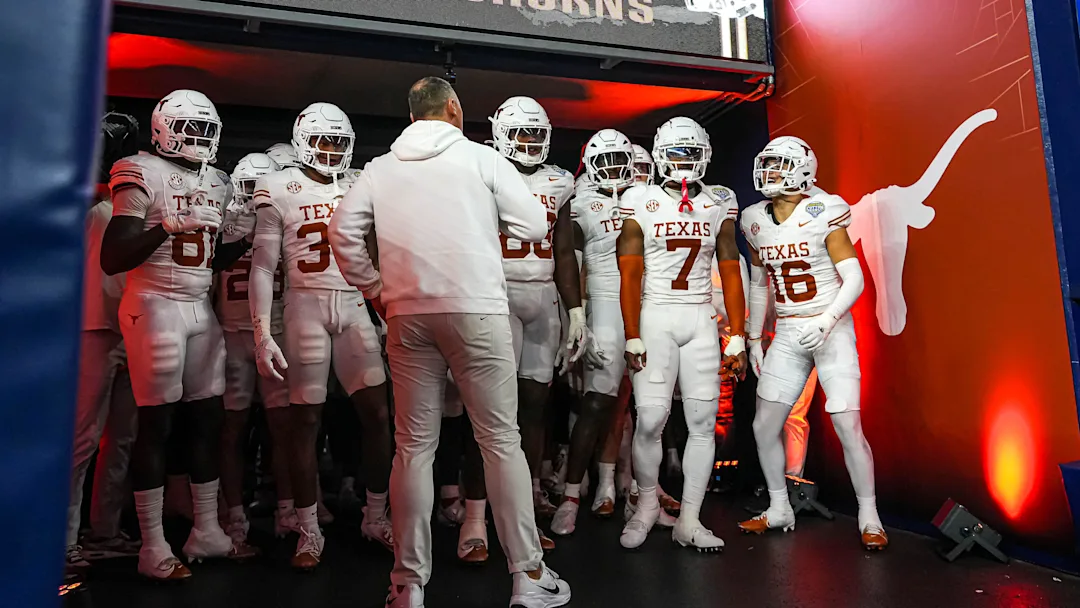The NCAA recently revealed a series of violations involving two Texas Longhorns football players, further intensifying the scrutiny on college athletics and the adherence to regulatory frameworks set in place to ensure fair play. These infractions, spanning a range of issues from improper benefits to potential academic misconduct, have reignited the debate on the NCAA’s enforcement mechanisms and the broader culture of collegiate sports. As the governing body of college athletics, the NCAA imposes strict rules on student-athletes, universities, and their affiliates to maintain the integrity of competition. However, recent developments surrounding these Texas Longhorns players highlight the ongoing challenges institutions face in keeping compliance in check.
The violations in question were discovered through an extensive investigation by the NCAA, which delved into multiple aspects of the players’ activities both on and off the field. The two players, whose identities have not been publicly disclosed due to ongoing proceedings, were found to have engaged in activities that breached NCAA rules. Reports indicate that one of the primary violations involved receiving impermissible benefits from a booster, a common issue in college athletics that has plagued many programs over the years. Boosters, who are often passionate supporters of their respective teams, sometimes cross the line in providing incentives to student-athletes, whether in the form of monetary gifts, free services, or other forms of support that are not permitted under NCAA regulations.
According to sources close to the investigation, one of the players allegedly accepted luxury items and cash gifts from a booster who had ties to the university but was not directly affiliated with the athletic department. This revelation prompted further scrutiny into the connections between donors and student-athletes, raising concerns about how much oversight institutions exercise over these relationships. The NCAA has stringent policies regarding benefits, and any instance where a player receives financial support outside of the parameters set by the organization constitutes a violation. Despite ongoing reforms in collegiate sports, including the recent developments in Name, Image, and Likeness (NIL) compensation, direct monetary benefits from boosters remain outside the scope of permissible activities.
In addition to financial infractions, the second player was reportedly involved in an academic integrity violation, which further complicated the situation. Allegations suggest that the athlete received unauthorized assistance in completing coursework, a breach of academic policies that extend beyond NCAA regulations into university governance. Academic misconduct in college sports has long been a contentious issue, as universities balance the pressures of athletic success with maintaining rigorous educational standards. In this case, reports indicate that the player may have had coursework completed by a third party, an act that, if confirmed, would not only violate NCAA rules but also university policies on academic integrity.
The implications of these violations are significant, not only for the players involved but also for the Texas Longhorns football program. The NCAA’s enforcement actions can lead to severe penalties, including suspensions, scholarship reductions, or even postseason bans for teams found to be in violation of the rules. In previous cases, major programs have suffered substantial consequences due to violations of a similar nature, and Texas now faces the challenge of addressing these issues while demonstrating compliance with NCAA regulations. The university’s response to the investigation will be closely monitored, as institutions are expected to take proactive measures in correcting and preventing such infractions.
One of the major debates surrounding NCAA violations is the perceived inconsistency in enforcement and punishment. Critics argue that some programs receive harsher penalties than others, depending on factors such as the prominence of the school, the level of public scrutiny, and the nature of the infractions. In recent years, there has been a push for greater transparency in how the NCAA handles investigations and issues sanctions. The case involving the Texas Longhorns players adds another layer to this ongoing discussion, as analysts and fans alike speculate on the potential repercussions and the precedent it may set for future violations.
Another key issue is the role of compliance departments within athletic programs. Universities employ compliance officers tasked with ensuring that athletes, coaches, and staff adhere to NCAA rules, but the effectiveness of these departments is often questioned when violations occur. In this case, questions have arisen regarding whether the Texas Longhorns’ compliance office was aware of any warning signs or failed to prevent the infractions from happening. While universities implement educational programs to inform athletes of the dos and don’ts of NCAA compliance, instances like these suggest that more oversight or stricter measures may be necessary to prevent rule-breaking.
The case also highlights the evolving landscape of college athletics, particularly with the increasing influence of NIL deals. With student-athletes now allowed to profit from their personal brand, some argue that the NCAA should rethink its stance on impermissible benefits to reflect the current realities of college sports. While NIL provides athletes with legal avenues to earn compensation, direct gifts or benefits from boosters remain a violation, and distinguishing between the two can sometimes be a gray area. The Texas Longhorns violations bring attention to this complexity, as some supporters argue that the rules need to be modernized to accommodate the shifting dynamics of athlete compensation.
For the Texas Longhorns football program, the immediate concern is mitigating the damage caused by these infractions. The university has reportedly cooperated fully with the NCAA investigation, a factor that could play a role in determining the severity of any potential penalties. In past cases, schools that have taken proactive measures, including self-imposing penalties or implementing stricter compliance protocols, have sometimes received more lenient treatment from the NCAA. Whether Texas follows a similar path remains to be seen, but the program will need to take definitive action to maintain its reputation and avoid long-term ramifications.
The involvement of boosters in NCAA violations is not a new phenomenon, but it remains one of the most persistent challenges in college athletics. The influence of well-connected individuals who have a vested interest in the success of a program can sometimes lead to ethical dilemmas, as seen in numerous high-profile cases across different sports. While universities attempt to regulate booster activity through compliance measures and education, the temptation for athletes to accept financial support remains strong, especially for those facing financial hardships. The Texas Longhorns case serves as another reminder of the ongoing battle to uphold the integrity of college sports while acknowledging the realities faced by student-athletes.
On the academic side, concerns about maintaining rigorous standards for student-athletes have been an ongoing issue. Universities have long been accused of prioritizing athletic success over academics, leading to instances where athletes receive improper assistance to maintain eligibility. The NCAA has taken steps to address this by implementing academic progress requirements, but the effectiveness of these measures is often debated. The allegations against the second Texas Longhorns player bring renewed attention to the pressures faced by student-athletes in balancing their academic responsibilities with the demands of high-level competition.
The next steps in the NCAA’s investigation will be crucial in determining the outcome for both players and the Texas football program as a whole. If the infractions are deemed severe, the NCAA could impose sanctions that impact the team’s ability to compete at the highest level. In past cases, schools have faced penalties such as scholarship reductions, probation, or even vacated wins, depending on the severity of the violations. While it remains to be seen how harshly the NCAA will act in this instance, the case will undoubtedly serve as a cautionary tale for other programs.
The Texas Longhorns football program, one of the most storied in college sports, now finds itself under the microscope as the NCAA navigates the complex process of determining appropriate actions. For the athletes involved, the consequences could be career-altering, potentially impacting their eligibility and future prospects. Meanwhile, the university faces the challenge of demonstrating accountability while also ensuring that similar violations do not occur in the future.
As the NCAA continues to address issues of compliance and fair competition, the Texas Longhorns case adds to the growing discussion about the role of enforcement, the influence of boosters, and the challenges of maintaining academic integrity in college athletics. While no final decisions have been made regarding penalties, the investigation has already sparked significant discourse on the state of NCAA regulations and the future of collegiate sports governance. The outcome of this case will not only affect the Texas Longhorns but could also set a precedent for how similar violations are handled in the years to come.



